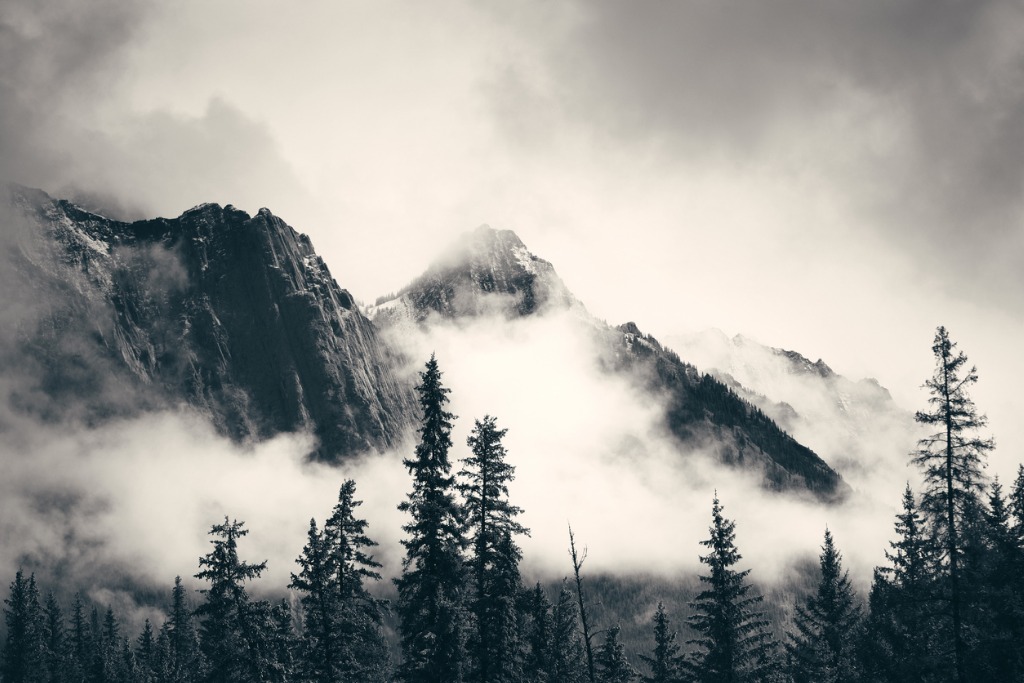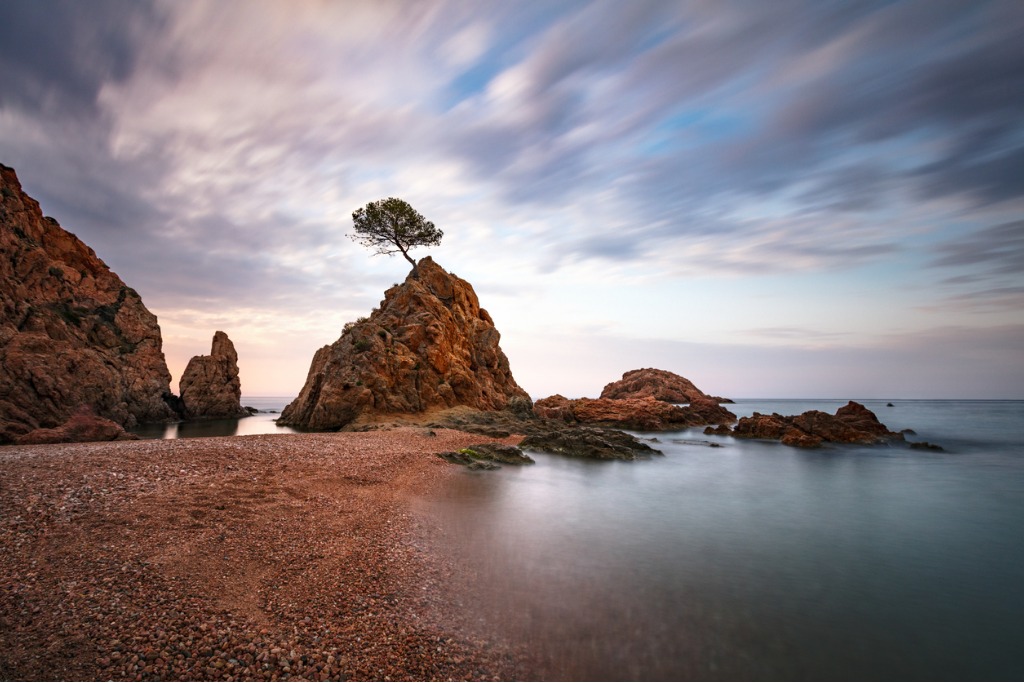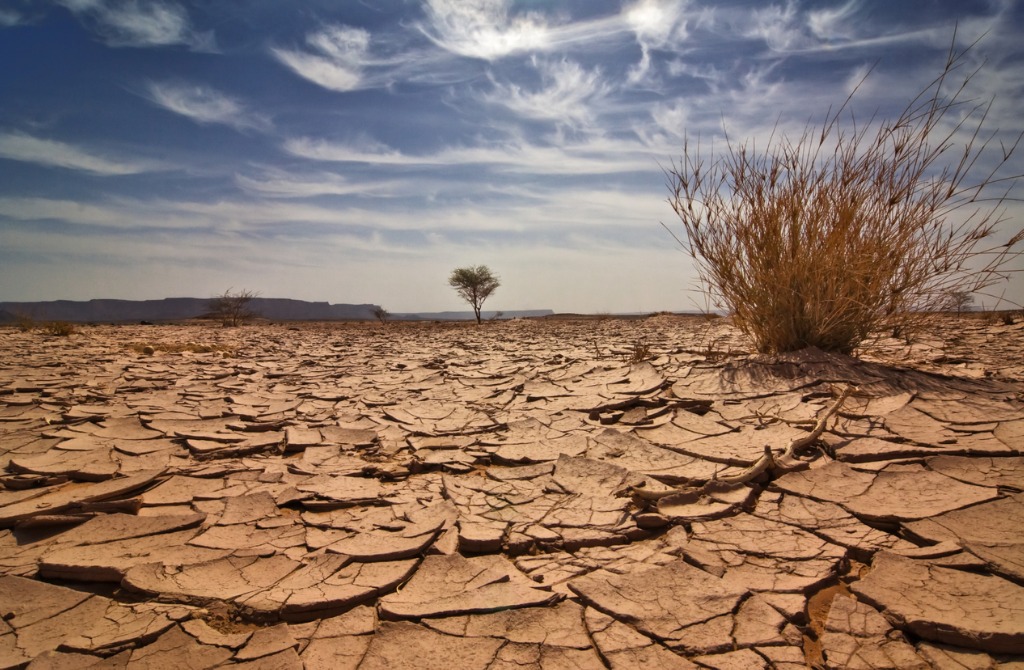
A lot of non-photographers mistakenly believe that landscape photography is really easy.
But if you've ever picked up a camera and photographed a landscape, you understand that there are a lot of things that have to go right to get the best shots.
From the correct camera settings to the right composition, planning your photo shoots to perfecting the process of editing your photos, it's a lot of hard work!
In the video above, Photo Tom gives us 13 top landscape photography tips that will help you create stunning landscape photos.
Though his tips are presented in the context of spring landscapes, many of them apply year-round.
For his complete list, watch the full video, and for a rundown of a few of his very best landscape photography tips, check out the article below.
Look for Fog

Fog is a wonderful component for landscapes because it helps you create moody, dramatic images.
Not only that, fog simplifies the scene, which allows you to focus the viewer's attention on just one subject or a group of subjects.
In the image above, for example, notice how the fog helps mask the chaos of the forest. In its place, there's a beautiful, clean palette on which the linear shape of the tree trunks can shine.

In this example, fog serves another purpose - to add brightness to the shot.
The large mountain in the background would be far too dark for a black and white version of this shot, so taking this photo when fog filled the valley helped this photographer create a much more balanced black and white image.
Not only that, but you can see how the fog adds a fluid visual element to the photo that contrasts so beautifully with the structure of the trees and mountains.
Extend the Exposure to Overcome a Boring Landscape

Ok, so "boring" might be too strong of a word here...
But sometimes you encounter a landscape that has some potential for a fun photo, but might be lacking in the visual interest department.
If there's a lack of trees, color, lines, or other elements that would traditionally provide interest, you can extend the exposure to add appeal to the image by blurring clouds or water.
In the photo above, there are some interesting lines, but that's about it.
But by using a long exposure, the gorgeous blur of the clouds and the water make this a much more interesting photo.

Again, in this case, there are some interesting shapes and textures in the shot, but nothing that's all that spectacular.
But with a long exposure that blurs the clouds, you immediately have a landscape photo that has a greater ability to grab and hold the viewer's attention.
That's because long exposures show us what the passage of time looks like, turning normal landscapes into dreamy wonderlands.
You don't have to have an exceedingly long exposure, either. In some cases, just a couple of seconds is enough.
Landscape Photography Tips: Get Low and Create Layers

The great thing about so many landscapes is that there are small details and elements all over the place that you can highlight in your images.
Whether that's interesting rocks, flowers or other plants, a pathway, or some other natural or manmade object, getting down low to the ground to photograph them gives you an opportunity to add beautiful layers to your landscapes, as seen above.
In fact, when considering how to take landscape photos, changing the perspective from which you shoot is one of the most powerful things you can do.

In the image above, you can see how the low perspective puts the gorgeous textures of the dry, cracked earth on full display.
Much like the long exposure trick discussed earlier, this allows you to create a more interesting photo in the face of a landscape that might otherwise look a bit on the boring side.

In this example, the low perspective not only gives us a better view of the wildflowers growing in the foreground, but it also brings some much-needed color and texture into the shot.
Additionally, look at all the layers going on in this image - the flowers and grass, the hiker walking away from the camera, the horizon line, and finally the sky beyond.
All these layers make this image feel much more dimensional than it otherwise would.
In considering how to photograph landscapes, each of these tips will help you create more interesting and appealing images.
Be sure to check the full video at the start of the article for even more fantastic landscape photography tips!
Article By:- Photographytalk.com
No comments:
Post a Comment